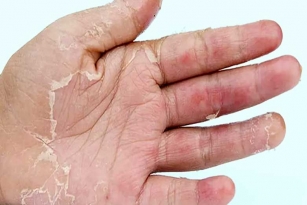Hormone-disrupting chemicals from water bottles DO cause cancer, diabetes, ADHD and autism
October 19, 2016 17:58
Plastic bottles contain hormone-disrupting chemicals that can cause cancer, diabetes, ADHD and autism, scientists confirmed in a report. Endocrine-disrupting chemicals (EDCs) interfere with the body's hormonal system, affecting the development and leaving the body open to a staggering range of diseases.
They are found in thousands of everyday products, ranging from plastic and metal food containers, to detergents, flame retardants, toys and cosmetics. These chemicals are responsible for scores of illnesses, costing the US a pocket-burning $340 billion in health-related costs every year, the bombshell report by NYU Langone revealed.
The dangerous chemicals has also boosted obesity, diabetes, some kind of cancers, male infertility and a painful condition for women known as endometriosis, the abnormal growth of tissue outside the uterus.
'Our research adds to the growing evidence on the tremendous economic as well as human health costs of endocrine-disrupting chemicals,' said lead investigator Leonardo Trasande, an associate professor at NYU Langone in New York City. 'This has the potential to develop into a much larger health and economic issue if no policy action is taken,' he added.
The chemicals affect the body's endocrine tissues, which produce essential hormones that help to regulate energy levels, reproduction, growth, development and as well as our response to stress and injury. Mimicking naturally occurring hormones such as estrogen and androgen, EDCs lock on to receptors within a human cell and block the body's own hormones from binding with it.
'Environmental contaminants can disrupt the endocrine system leading to adverse-health consequences,' according to the US Environmental Protection Agency.
The biggest chemical culprit by far among the thousands of man made molecules suspected of interfering with the human hormones are the so-called PBDEs, found in flame retardants. Bisphenol A, used to line tin food cans, along with phthalates in plastic food containers and many cosmetics, were also held to be responsible for upward of $50 billion worth of health damages.
Crucially, the main drivers of disease and disability were different on either side of the Atlantic, Trasande said.
'US costs are higher mainly because of the widespread use in furniture of brominated flame retardants,' which were banned in the EU in 2008, he explained.
Crucially, the main drivers of disease and disability were different on either side of the Atlantic, Trasande said. 'US costs are higher mainly because of the widespread use in furniture of brominated flame retardants,' which were banned in the EU in 2008, he explained.
Flame retardants and pesticides in particular are known to affect the developing brain and can lead to loss of IQ. “Each IQ point lost corresponds to approximately two per cent in lost productivity,” Trasande explained.
Commenting in the same journal, Michele La Merrill, an expert in environmental toxicology at the University of California in Davis, said that the new findings 'provide a lesson on the lasting economic effects of harmful chemicals.' They should 'inspire a policy shift to end the cat-and-mouse game currently employed the US government and industry.'
By Premji













